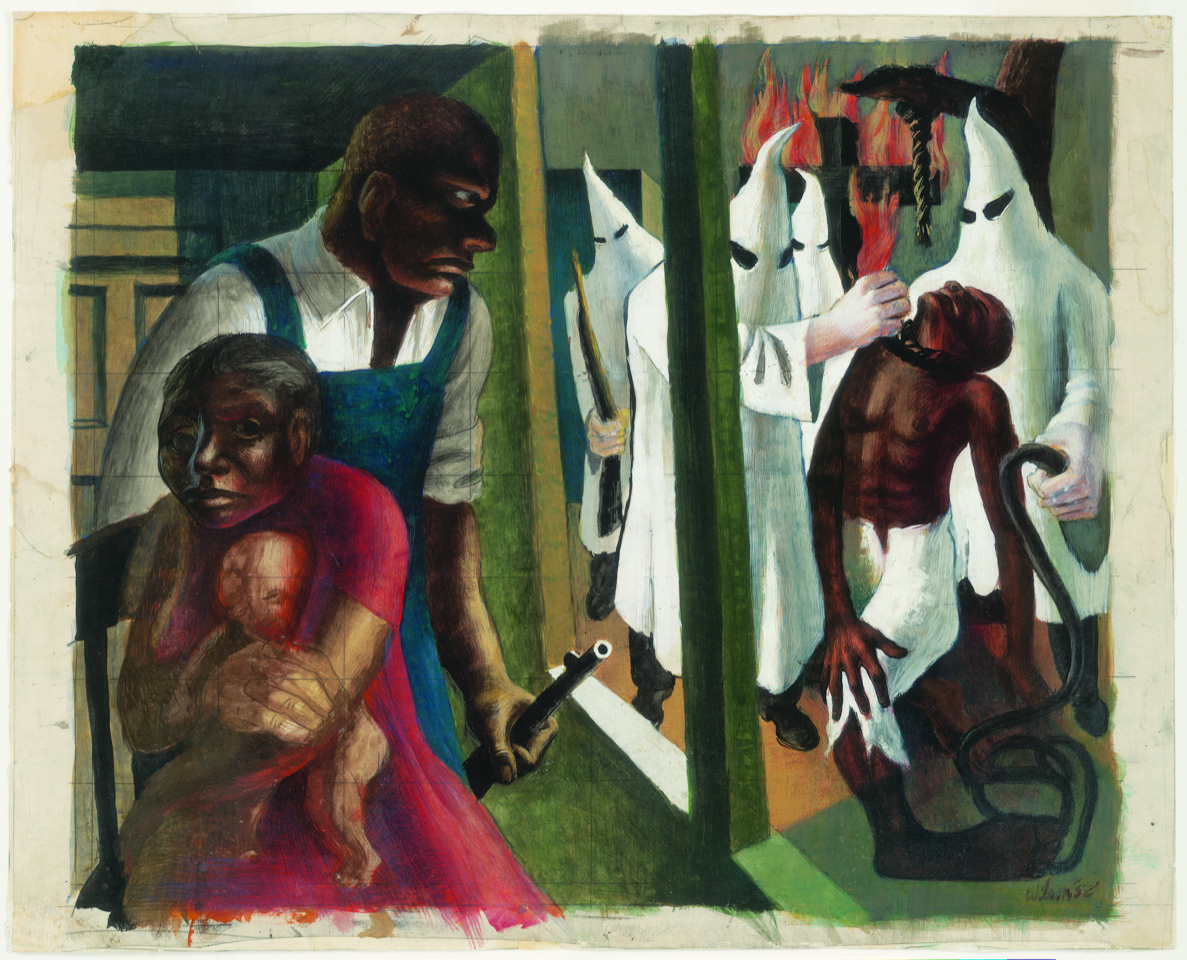
Courtesy of Yale University Art Gallery
A new exhibition at the Yale University Art Gallery called “Reckoning with ‘The Incident:’ John Wilson’s Studies for a Lynching Mural” highlights a no longer extant fresco mural by African-American artist John Wilson.
The exhibition, which features Wilson’s preparatory sketches, painted studies, drawings and prints related to the mural will be on view from Jan. 17 to May 10. The exhibition’s components were loaned from private collections, the Faulconer Gallery and the Clark Atlanta University Art Museum.
“[Wilson] spent his life seeking through his art to inspire and motivate people to reckon with racial injustice,” said Elisabeth Hodermarsky, co-curator of this exhibition and the Sutphin Family Curator of Prints and Drawings. “His message remains clear, and current and vitally important.”
According to Hodermarsky, the exhibition sheds light on both Wilson’s coming-of-age and how he confronts one of the most enormous moral atrocities of American history in his art: the lynching of thousands of African Americans in the early 20th century. It reunites nearly all of the studies and works Wilson created about racial terror lynching during his time in Mexico City.
Wilson’s parents emigrated from British Guiana. He learned about lynchings in America through black progressive newspapers such as the Amsterdam News, the Chicago Defender and the Pittsburgh Courier. His father, who was a Black Nationalist, subscribed to these newspapers.
Wilson painted “The Incident” in 1952, while on a scholarship to study traditional fresco mural painting in Mexico City. The mural, executed on an exterior wall, depicted the lynching of a young African-American man at the hands of the Ku Klux Klan, a white supremacist organization founded in the wake of the Civil War. The mural was supposed to be temporary, but Mexican muralist David Alfaro Siqueiros — then-head of Mexico’s Department for the Protection and Restoration of Murals — advocated for its preservation.
Hodermarsky said “The Incident” was a mural that, in 1952, Wilson would never have been able to realize in the United States. She described it as “one of the most powerful documented works of art” ever created on the subject.
Hodermarsky curated the exhibit with Pamela Franks, former Senior Deputy Director and Seymour H. Knox, Jr. curator of Modern and Contemporary Art at the YUAG. Hodermarsky noted that she and Franks had acquired three studies related to the mural by 2000. They were compelled to organize an exhibition on the subject when they learned of similar studies in other university art museum collections. They were also inspired by the imminent opening of the National Memorial for Peace and Justice in Montgomery, which memorializes over 4,400 victims of racial terror lynchings in the Southern states that occured between 1877 and 1950.
Hodermarsky said that the show highlights several themes, including the mural’s importance to John Wilson’s career, the Mexican mural movement and the horrific history and enduring legacy of lynching in the US.
Margaret Spillane, a professor in the English department, studied as an undergraduate at Boston University when Wilson was teaching there. She said she remembers him as “fiercely uncompromising” in his technical virtuosity and commitment to social justice.
“People forget that after World War II, the right was hounding any figurative painters whose narrative content appeared progressive,” Spillane said. “John Wilson was relentless in his resistance to these demagogues and cynics, and taught his students to be as fearless as he was in resisting such coercion.”
Since last June, the exhibition has toured to Faulconer Gallery in Grinnell College, the David C. Driskell Center at the University of Maryland and the Clark Atlanta University Art Museum. It will remain at the YUAG until May 20. Hodermarsky described the programs and conversations at all four campuses as “robust” and “important.”
“What we hope this exhibition will do is to extend out that conversation about the history of lynching that is focused in Montgomery to college campuses where it is critical that these discussions happen,” Hodermarsky said.
At 5 p.m. on Feb. 20, a panel discussion will use this exhibition to discuss past and present representations of lynching and other racial violence.
Freya Savla | freya.savla@yale.edu







